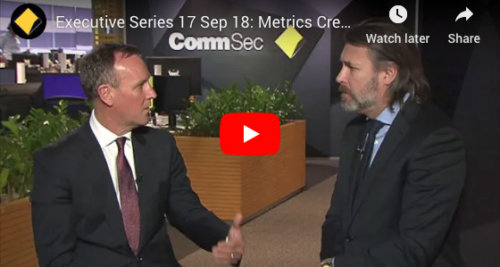Property sector and investors both benefitting from transformation of banking post-Hayne

Australia’s banking sector is transforming due to myriad factors, ranging from global changes through to the Hayne Royal Commission, and this is creating opportunities for both borrowers and investors.
While lending from the traditional big banks has tightened in recent years, the growth of non-bank lenders means that capital is still readily available. Similarly, by investing in direct lending funds, investors are benefiting from improved returns compared with banks cash and term deposit rates.
Both borrowers and investors have to recognise these changes and how to tap them, suggests Metrics Credit Partners (Metrics).
“While non-bank lending has developed to the point where it is directly competing with traditional bank lending, it is also complementing it, with non-banks lending alongside the major banks for the same loans,” notes Andrew Lockhart, Managing Partner of Metrics. “From a borrower perspective, there can be many benefits to working with non-bank lenders. Because these lenders also need to raise capital, they need to keep loss rates low and returns consistent and will often align with borrowers to work through tough situations. This is in contrast to larger banks, which typically follow a set process with less room to move.”
Mr Lockhart said several property and private equity deals would not have been done without non-bank lenders. For example, on property deals banks often finance the senior land acquisition, with non-banks often financing the mezzanine debt in addition to senior debt.
Banks have been retreating from private debt markets since the global financial crisis forced them to repair their balance sheets and, more recently, Basel III mandated stronger capital adequacy obligations. As a result, Australia’s non-bank lenders are slowly following the US and UK and taking in a larger slice of the loan market.
Higher returns for investors
He said: “The growth in the non-bank lending market is opening up opportunities for investors to garner improved returns.
“From a return perspective, investing in a diversified portfolio of corporate loans enables investors to earn 3 to 5% above the Reserve Bank rate – which is much needed in a low interest rate environment.”
Secure investments in uncertain times
Mr Lockhart added: “In addition to strong return potential, Australia’s corporate insolvency laws are probably one of the most underappreciated benefits of the local corporate loan market, providing greater security of capital for investors.
“Australian legislation governing corporate insolvency provides investors with protections, as lenders rank highest in the pecking order in terms of the capital structure of a company, above equity holders.”
If a company were to get into difficulty, the lender could ask the borrower to try to raise additional equity and use the proceeds to pay part of the outstanding debt. If the borrower was unable to raise additional equity, the lender could then force an asset sales process to recoup funds. Secured creditors in Australia have effective security over companies they lend to, meaning they can take control over the company or property they have security over, and look to either sell that asset or restructure the debt, for example by converting it to part debt/ part equity.
Corporate loan loss rates in Australia are low, averaging 0.32%1 over the past 10 years.
Investing in a diversified portfolio rather than lending directly to a few select corporates, can further limit downside risks by spreading investors’ capital across a range of sectors, risk profiles and loan terms.
“The transformation of Australia’s banking sector and its burgeoning corporate loan market will continue to present opportunities for investors seeking more certain investment opportunities in an increasingly uncertain market,” Mr Lockhart said.
Online by Andrew Lockhart
Other News
Research Paper: Six Trends for Private Credit in 2026
Metrics Credit Partners has released its latest research paper, Six Trends for Private Credit in 2026, exploring the opportunities and challenges…
Metrics Innovate Reconciliation Action Plan
We are proud to share our second Reconciliation Action Plan (RAP), reaffirming our commitment to truth, healing and unity. We…
INSIGHTS
MCP Income Opportunities Trust (MOT) lists on ASX
Sydney, 29 April 2019: The Trust Company (RE Services) Limited (ABN 45 003 278 831) (Responsible Entity) is the responsible…
MCP Master Income Trust wins Lonsec Listed Fund Award
The award came a year after MXT was listed on the Australian Securities Exchange






